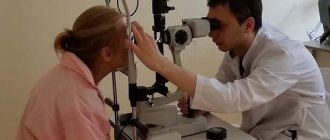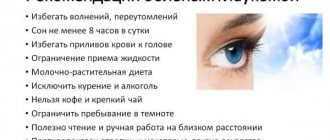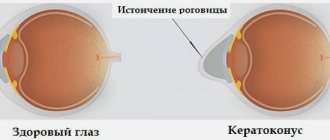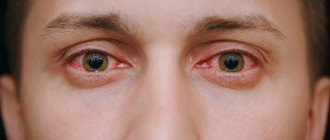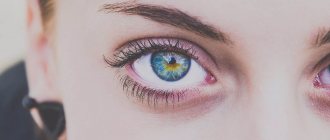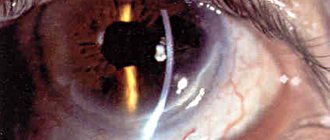Main signs of drug addiction
If we compare drug addiction with another, no less pressing problem of our time, alcoholism, then we can note their main difference: detecting drug addiction at the initial stage is more difficult than alcoholism. This is explained both by less noticeable symptoms and by the amazing secrecy of drug addicts. Therefore, you need to know the main signs of drug use in order to understand what exactly to look for. The sooner you can identify an addiction in a loved one, the more chances you have to help him.
First of all, it is worth remembering that drug addiction has many “faces”. Signs of drug use of different types will vary. They are expressed in the specific symptoms and behavior of the addict. Each type of drug affects a person differently. The addict gradually changes; he experiences changes in appearance, behavior, psyche, and social relationships. These signs, of course, will be different for a cocaine addict and for a marijuana smoker, but there are still basic general criteria by which one can notice the development of any drug addiction.
Changes in appearance
Some of the main signs of drug use will be the following changes in the appearance of the drug addict:
- The color of the skin changes; it may be excessively red or, on the contrary, unnaturally pale.
- The texture of the skin changes. Peeling, ulcers, bruises, unusual dryness or, on the contrary, excessive oiliness of the skin may appear.
- Often, drug addicts experience a change in pupil size that is inadequate to the amount of light. Sometimes the pupils can dilate so much that the iris is not visible, but can narrow to a point.
- In addition, a red vascular network appears periodically or constantly on the whites of the drug addict’s eyes. Some drugs may cause an unnatural “glassy” shine to the surface of the eyeball.
- Under the influence of drugs, the expression of the eyes changes. The gaze may be wandering, crazy.
- The emotional state of the patient is not related to what is happening. A range of emotions can appear on the face of an addict for no reason, and then it can become completely devoid of them.
- Injection marks on the body, purulent wounds.
- The tongue and lips may become covered with ulcers, sores, and cracks.
The appearance of a person who uses drugs gradually changes. He stops doing after himself, and untidiness appears in his appearance. This indifference to one’s appearance can lead to poor hygiene: dirty hair, overgrown nails, and so on. The patient may use the same clothes for many days in a row without washing them. Typically, the person will wear something with long sleeves to hide the needle marks. Often drug addicts, even in not very sunny weather, wear dark glasses so that others do not see the condition of their eyes.
How do drug addicts hide the signs of addiction?
Heroin addicts, in order to dilate their pupils, use the pharmaceutical drug “Becarbon”, used to treat stomach diseases. This drug is crushed into powder, then diluted with water and dropped into the eyes. For this reason, it would be a good idea to check the pockets of your loved one; if he is not treating stomach diseases, then the presence of Becarbon will be a clear sign of heroin addiction. A peculiarity of this drug is the uneven dilation of the pupils, which is also evidence that the drug addict was trying to hide the constricted pupils.
Drug addicts who take salts, amphetamines or opioids use drugs from the miotic group to artificially constrict their pupils. Regular use of such drugs significantly reduces vision.
Constantly reddened eyes indicate that a drug addict regularly smokes hashish, marijuana or other plant-based drugs. This sign is easily hidden with ordinary Visine eye drops.
If you constantly inject drugs into a vein with a syringe, injection marks remain; if the drug is injected into the same place, a strong scar will form. Drug addicts explain the injection sites as animal scratches, acne or allergies. To hide traces of injections, various ointments are used to prevent blood clots. To hide the marks of injections, the drug is injected into the veins located in the groin area.
Changes in health status
External signs of drug use are not always enough to determine whether a person is addicted to drugs or not. Therefore, it is worth paying attention to his state of health. Drug addiction is a disease that negatively affects the condition of all internal organs of a person. In addition, during the period of withdrawal syndrome, a particular deterioration in health occurs, which manifests itself in a number of symptoms. Let's list those that should especially alert you, especially when coupled with external signs.
- A person’s body weight can change dramatically and for no reason. A large number of kilograms are being lost, up to ten per week.
- The patient has constant thirst and dry mouth.
- Changes in eating behavior. A person may eat almost nothing for several days and then begin to overeat.
- Disturbance in sleep and wakefulness. A drug addict may not sleep at all for several days in a row, this is how some drugs work.
- There are jumps in blood pressure from low to excessively high.
- Persistent cough that cannot be treated with medication.
- Problems with the gastrointestinal tract of various kinds begin, from diarrhea to prolonged constipation.
Changes in behavior
- The first sign is a change in friends. A drug addict has a completely different environment of communication; he has no common topics with his former comrades. As a result, past connections are lost, he remembers them only when he needs money for the next dose.
- A drug addict is characterized by secrecy and incomprehensible phrases for others. It is necessary to pay attention to the person’s reaction when talking face to face. If your eyes do not meet during a conversation or he avoids such a conversation by any means, then you should think about it.
- Check your first aid kit to see if there are medications intended to relieve withdrawal symptoms. The addict has a loss of interest in everything. He may leave the house for a long time, and upon return his appearance leaves much to be desired.
- Frequent changes of mood. This behavior is especially evident in novice drug addicts. Fun can suddenly give way to sadness and vice versa. There is also causeless aggression, concern or indifference. Disorientation is possible.
- Teen drug addicts need pocket money, and the amounts are constantly increasing. Check if all valuables are in place; maybe they have been in the pawnshop for a long time.
Changes in the addict's behavior
The addict's behavior undergoes significant changes. He can completely change his social circle. Former interests lose their significance and are completely forgotten. New words appear in speech, and an atypical manner of behavior is observed. These signs of drug use can be seen in both teenagers and adults.
- Changing interests and hobbies, most often a person ceases to be interested in anything at all. Study, work, sports - everything is gradually abandoned.
- Old friends and acquaintances disappear, they are replaced by new people, often of unknown occupation and with a suspicious appearance.
- The addict becomes deceitful, cunning and secretive. He almost always doesn’t say something and doesn’t answer many questions. It becomes unclear to you what he is doing and where he spends his time.
- The style and manner of communication are changing. Drug addicts often speak reluctantly, briefly, and are emotionally unbalanced. Slang words and swear words may appear in the conversation.
- Problems with study and work begin, associated with repeated absences and absenteeism.
- Sudden and frequent mood changes are observed. A drug addict can show causeless aggression even towards close people, which he would never have allowed himself to do before.
- A person’s personal qualities change, he loses moral values. Forced to constantly look for money for drugs, he gets it through lies and begins to steal.
The appearance of strange objects
Items that may serve as a sign of drug addiction in a family member deserve special attention. If you find strange objects at home that are unclear where they came from, this is a very serious reason to take a closer look at the situation and other symptoms. There is a high probability that your loved one has become addicted to drugs. Here's a list of similar items:
- Syringes, medicine bottles.
- Capsules and tablets, and they can be without packaging at all.
- Smoking pipes, plastic bottles with foil instead of a cork.
- Bundles, bags with powder, small crystals, dried crushed plants, a mass similar to plasticine with a specific smell.
- Cigarettes with a "sleeve".
- Precious metals scales.
- Tourniquets for tightening veins.
- Fire-burnt spoons.
- Moment glue and acetone.
Symptoms of drug addiction at different stages of the disease
As we noted above, various drugs cause specific symptoms in addition to the main ones. The stages of drug addiction development will always be the same. Each stage has its own characteristics, which we will describe below. True, there are drugs, when used, the disease progresses more rapidly, and there are addictions that last for several years, but the essence does not change.
- Signs of the first stage of drug addiction. At this stage, the disease is most difficult to see; physical symptoms are little manifested: the skin still has a normal appearance, not covered with pimples and ulcers. You can take a closer look at the condition of the pupils. But what betrays a drug addict most of all is his behavior. This is irritability; an addict can “freak out” over the most insignificant reason, or even without it. Already during this period, a person’s social circle changes. As the second stage of drug addiction approaches, noticeable health problems may begin: runny nose and cough, changes in weight. When using narcotic drugs, the emotional state becomes extremely unstable; in a few minutes a person can express the whole gamut of emotions from joy to sobs.
- Signs of the second stage of drug addiction. If during the first stage the addict was dependent on drugs only psychologically, now he has developed a stable physical dependence. This means that after a certain period of time he needs to take the next dose of the drug so that withdrawal does not begin. The appearance becomes unkempt, no time is given to it, hygiene is kept to a minimum. He is no longer interested in anything except how to find money for drugs. Health problems appear. Drug addiction affects the face and body: bags under the eyes, ulcers and bruises on the arms and other parts of the body, severe thinness. Weakened immunity caused by drug use leads to persistent infectious diseases and high blood pressure. A drug addict cannot sleep at night or for several days. Problems begin at work and at school, and often he simply leaves there. There is a breakdown in relationships with family members, and constant conflicts arise. The drug addict becomes asocial and communicates little with others. The patient is unpredictable and hysterical, lies, begs for money, and begins to steal.
- Signs of the third stage of drug addiction. At this stage, drug addiction manifests itself in its entirety. The body is completely exhausted due to the disease, there are constant problems with the gastrointestinal tract, the skin is covered with ulcers and bruises, teeth rot and fall out. Naturally, there is no talk of any attention to clothing and hygiene. A person physically and psychologically degrades. A drug addict is almost always depressed, completely loses interest in life, and breaks off all ties with society. His life now is an eternal search for the next dose of drugs.
Signs of drug use (signs of a drug addict)
Home / Basement / Drug addiction / All about drug addiction from A to Z / Signs of drug use (signs of a drug addict)
Drug and substance abuse are serious problems and need to be identified as early as possible. I would like to note that you should not sound the alarm immediately as soon as you notice any of the signs of drug use. Only together can they point to the real problem. Individually, these signs can also indicate a problem area. For example: Falling in love can cause sleep disturbances and changes in communication with loved ones. The disease may cause changes in the pupils (but remember, they will still react to changes in light). In adults, strong changes in behavior will be suspicious, while in a child growing up, changes are normal, so you should pay attention to the totality of signs.
If you have any doubts about what is happening to a person close to you, if you need help, contact our specialists. We will be happy to assist you!
Main signs of drug addiction
External signs of drug use are behavioral symptoms and “evidence” that indicate that a person is intoxicated. Signs of a drug addict are expressed by the following things:
- in sleep disturbance;
- muscle and joint pain;
- unstable blood pressure;
- dry mouth;
- decreased sexual potency;
- menstrual irregularities;
- losing weight;
- violation of the body’s protective properties, etc.
Signs of opiate addiction
Opiates are drugs such as morphine, opium, heroin, codeine. An opiate addict can be recognized by signs that are expressed externally:
- severe constriction of the pupils;
- the eyes are slightly reddish and very shiny;
- bruises under the eyes;
- shallow intermittent slow breathing;
- itchy skin (especially nose);
- lethargic and sleepy appearance;
- slurred speech;
- passivity and general relaxation;
- apathy towards everything except oneself;
- euphoria and carefree;
- excessive “courage” and determination in behavior;
- nervousness, etc.
Physiological signs of taking these drugs:
- dry skin and mucous membranes (lips, tongue);
- superficial sleep;
- decreased urine output;
- frequent constipation;
- There is no cough when you have a cold;
- slight decrease in body temperature.
Symptoms of methadone addiction
The following is a list of external symptoms of a methadone addict (this drug lasts from 1-3 days):
- constriction of the pupils;
- slow and confused speech;
- slow movements;
- irritability over trifles;
- appetite disorders;
- superficial sleep;
- shallow breathing;
- “good nature”, etc.
Physiological signs of methadone addicts include mild itching of the skin.
Signs of drug addiction to cannabis
Next, we will give signs of taking cannabinoid drugs (that is, those produced from hemp, and these are: marijuana, anasha, hashish, plan, ganja, charas, ma, kief, dachcha, synthetic cannabinol, Mary-Jane, hemp).
The first signs of using such drugs:
- nausea;
- headache;
- dizziness;
- difficulty breathing;
- euphoria;
- a surge of energy;
- talkativeness;
- sudden mood swings;
- decisions are made very quickly;
- distorted perceptions (of space, sounds, etc.);
- crawling sensations;
- redness of the skin, less often pallor, etc.
External changes that those who use cannabinoid drugs are subject to:
- unstable attention;
- very poor memory;
- a strong decrease in criticality of one’s behavior (does not distinguish bad deeds from good ones);
- selfishness;
- callousness and intolerance;
- no interest in anything except drugs;
- outbursts of aggression;
- signs of paranoid schizophrenia;
- personality degradation, etc.
Physiological changes:
- lung diseases (bronchitis, etc., up to lung cancer);
- hepatitis;
- renal failure;
- myocardial dystrophy (heart muscle);
- exhaustion;
- impotence in men and lack of menstruation in women.
Symptoms of cocaine, methamphetamine, amphetamine use
The following is a description of the external and physiological signs of the use of cocaine, methamphetamine (dexamphetamine; methylphenidan; phenmetrazine; methedrine; ephedrine (“Jeff”, “mulka”, “fen”); pervitin (“screw”); phenamine; “ecstasy”) and amphetamine (Preludin; Ritalin; Romilar; Desoxyn). These drugs are similar in their signs of use and have similar effects.
External and physiological signs:
- red eyes, especially in the morning due to insomnia;
- dilated pupils and painful sensations in the eyes due to bright light, a tendency to wear sunglasses;
- nosebleeds;
- euphoria;
- self-confidence;
- swagger;
- talkativeness;
- laughs a lot;
- good mood followed by aggression;
- hallucinations;
- lack of appetite and sleep;
- fast movements (faster than usual);
- secrecy, dishonesty, unbalanced psyche and other signs of degradation.
After taking a large dose in the evening, the drug addict will be lethargic and depressed the next morning. He will have a tendency to use sedatives and alcohol to combat insomnia.
Symptoms of using sedative-hypnotics
Sedative-hypnotics include barbiturates (chloral hydrate; meprobamate; methaqualone; barbamyl; phenobarbital; reladorm; cyclobarbital). The following changes occur from these tablets:
- irritability;
- absent-mindedness;
- poor memory;
- motor dysfunction;
- half-asleep state up to coma;
- physiological changes: weak breathing and pulse.
Another type of hypnotic-sedative is a benzodiazepine (phenazipam; radedorm; relanium (diazepam); elenium; imovan; donormil). The symptoms of using these tablets are as follows:
- External changes: slurred speech and disorientation;
- Physiological changes: dry mouth.
Signs of butyrate use
Butyrate (compote, pinocchio, butyrate, water, GHB, etc.) causes the following changes:
- in small doses: relaxation and slight dizziness;
- in medium doses: inappropriate behavior, confused speech, unstable psyche, nausea;
- in large doses: impaired sense of balance, nausea, vomiting, weakness, uncontrolled behavior and memory loss;
- when combined with alcohol: vomiting and loss of consciousness or sleep, and then respiratory arrest and death.
Signs of hallucinogen use
The hallucinogens include the drug phencyclidine (PCP “pi-si-pi”, “angel dust”).
Physiological changes (drug intoxication lasts from 4 to 6 hours):
- The most accurate indicator that something is wrong is the condition of the eyes, or rather the pupils. Of course, pupils can be dilated or constricted in case of health problems (high or low blood pressure, vision problems, etc.). But... If there is a suspicion of drug use, then the pupils do not react to changes in lighting. People who use drugs use all sorts of tricks to disguise the reaction of the pupil. For example, if a person has used opiates, then immediately after use the pupil narrows to a point and remains very small for some time. Drug addicts use various medications to expand it (drip stomach drops, smear belladonna suppositories). However, it is not possible to apply the same amount of drops into the eye and the pupils will be different sizes. You can also use this technique - turn the person to face the bright light and look at the reaction of the pupil, then turn him towards the dark part of the room and again pay attention to the reaction of the pupil. If it was used, then the pupil will not react to changes in lighting. If not, then you will see a reaction (in bright light it will narrow, in the dark it will expand);
- The next indicator is the quality and quantity of sleep. If drug use has occurred and continues, the quality of sleep will change. If these are “fast” (club) drugs, then there will be problems with sleep. He may stay awake all night, listen to music or do something, and then during the day he becomes depressed or sleeps for a very long time (sometimes there is no sleep for more than a day and then he also sleeps for a long time). If it’s opiates, then it “sleeps on the go” - it freezes, itches, nods during a conversation;
- Body condition - the quality of the skin changes (dryness, paleness, acne), changes in movements, posture. Problems with bowel movements if you use opiates;
- Clothing - in a warm room or during the warm season, when everyone wears short sleeves, the person who uses drugs (if it is injection) will wear long sleeves. Often you will wear sunglasses even indoors;
- Communication - in a person who uses drugs, communication becomes inadequate - either inhibited or aggressive. That is, it will change. pale skin;
- dilated or constricted pupils (or normal pupils, but sleepy eyes), slightly swollen eyelids;
- red or cloudy eyes, shine in the eyes, redness of the whites of the eyes, eyes are rounded like an “owl”;
- slow speech, incoherent, stuttering, there is a noticeable lack of logic in statements between phrases, incomprehensible statements, jumping from topic to topic, paying attention to insignificant details in a conversation, a silly tone of conversation;
- poor coordination of movements, uncontrolled movements, imbalance (as if drunk);
- increasing indifference to what is happening nearby;
- leaving home and absenteeism from school;
- difficulty concentrating, memory deterioration, attention is weakened and focused on internal experiences;
- inadequate response to criticism;
- frequent and unexpected mood changes;
- unusual requests for money;
- loss of valuables, clothing and other things from the house;
- frequent unexplained phone calls;
- injection marks, cuts, bruises;
- rolled up pieces of paper, small spoons, capsules, bottles, vials;
- constant licking of lips due to dryness;
- bad breath;
- specific burning smell from clothes;
- excessive gaiety and laughter for no reason;
- confusion of thoughts;
- abruptly changing mood to a state of incomprehensible sadness and thoughtfulness;
- increased need for verbal communication over time, giving way to a desire to be alone with music (for hours);
- sometimes hallucinations;
- with a sudden change of situation - fear and paranoid phenomena;
- lack or increased appetite (“gluttony”) and lack of hunger;
- excessively excited state and talkativeness;
- lack of fatigue, increased activity and endurance of the body, all movements and actions are performed at an accelerated pace, the need to constantly move and do something;
- feeling of strength and superiority;
- exhaustion;
- insomnia;
- sometimes trembling of the limbs;
- euphoria, feeling of emotional uplift, excessively “good” mood;
- reassessment of one's capabilities;
- increased sexual activity;
- strong desire to talk;
- rapid pulse;
- confusion;
- slow mental reactions;
- difficult thinking process and speed of making logical decisions;
- indecision;
- depressed mood, etc.;
- drowsiness;
- lethargy;
- confusion;
- slow reaction;
- muscle weakness;
- articulation disorder;
- unsure gait;
- hallucinations;
- suicidal tendencies;
- disturbances of vision and consciousness;
- fear and panic;
- frequent memory loss;
- inability to perform purposeful actions;
- split personality, etc.
- increased blood pressure;
- sweating;
- vomit;
- dizziness.
SEEK HELP AT , AND WE WILL DO EVERYTHING POSSIBLE TO SAVE YOUR LOVED ONE FROM DRUGS
Learn more about the Narconon rehabilitation program
Call us now, we will listen to you. In addition, we can come pick up your family member to accompany you to our rehabilitation center
8
or
Book a consultation
Signs of addiction to various drugs
Signs of using specific drugs have specific characteristics, here are some of them:
- Opium addiction. This group includes natural and artificial opiates. Drug addicts who use them are characterized by complete indifference to the surrounding reality, quiet and slow speech. Signs of opium addiction are drowsiness, lack of concentration, and a desire to be alone. The pupils are constricted, breathing and heart rate are slow.
- Cannabinoids. Under the influence of a drug, the addict is sociable, active, and talks a lot. After which one may become despondent, paranoia and panic attacks are often observed. In addition, addicts can be recognized by their constant thirst and strong appetite, which appears periodically.
- Psychostimulants. When using such drugs, a drug addict can be full of strength and energy for several days, while he does not eat or sleep. The addict is talkative, always trying to do something, but often this turns into meaningless fuss. A good mood can suddenly give way to aggression and thoughts of suicide.
- Hallucinogenic drugs. As we can see from the name, the behavior of such a person will sooner or later show signs of hallucinations. He can talk to himself or see things that other people don't see. In such addicts, blood pressure jumps, a rapid pulse, dilated pupils, and dry skin are observed. When using hallucinogens, sometimes there is a loss of coordination of movements, as well as a complete loss of control over oneself.
Signs of drug addiction: how to recognize a drug addict
Synthetic drug salt
Salt is the most dangerous and accessible drug. Every 4th patient of our clinic is admitted with the problem of salt dependence. There are many cases of death even after a single dose. Salts are purchased via the Internet (bookmarks). To do this, you need to be able to use a smartphone and have 1000 rubles in your pocket. The following signs indicate salt addiction:
- Chaotic, uncontrolled gestures;
- Facial grimaces;
- Lack of sleep and appetite (up to 5 days);
- Strong clenching of the jaw;
- Thirst, dryness;
- Hasty speech;
- Panic attacks, persecution mania.
Salt intake can also be diagnosed by other symptoms. The drug addict will behave very actively and even unusually fussy. This vanity manifests itself both in a person’s movements and in his conversation. There is an excessive release of energy that a person simply has nowhere to put. He quickly switches from one task to another or vice versa, and becomes fixated on one activity for a long time, perhaps even unimportant. He willingly joins in the conversation and is often unable to stop, although he rarely finishes his thought, jumping to a completely different topic. This behavior will continue until the drug wears off, during which time the addict does not eat or sleep. (3-5 days).
syringes, needles, foil, lighters, rolled up tubes, broken light bulbs
When the narcotic effect ends, energy and high spirits quickly give way to depression, weakness and emptiness. Sleep is possible approximately 6-10 hours after the last dose. The lifestyle of salt drug addicts boils down to use, which lasts several days, then long sleep, recovery, and all over again.
Salt is taken in all possible ways: smoked, snorted, injected intravenously. Packaged in small plastic bags. Usually it is a crystalline powder of a cloudy white color, less often blue or pink.
salts: ska, eska, speed, crystals. Alternative names
As you have already noticed, each group of drugs affects a person completely differently. Therefore, in each specific case, the signs of drug addiction may differ. We have listed the symptoms that appear directly during the process of use, and now let’s talk about how to recognize the development of drug addiction with systematic use.
Help from specialists for drug addiction
The features of various addictions can be listed for a long time, but the most important thing is not to miss the main signs of drug addiction and seek help in a timely manner. The specialist will determine the type of addiction and select the appropriate treatment. Please note that today specialized drug treatment clinics provide free 24-hour telephone consultations, as well as provide motivation and transportation for drug addicts to the clinic. At the first signs of drug addiction, contact a medical facility and get timely advice from a specialist. This will help you avoid many problems and preserve the health and life of your loved one.

